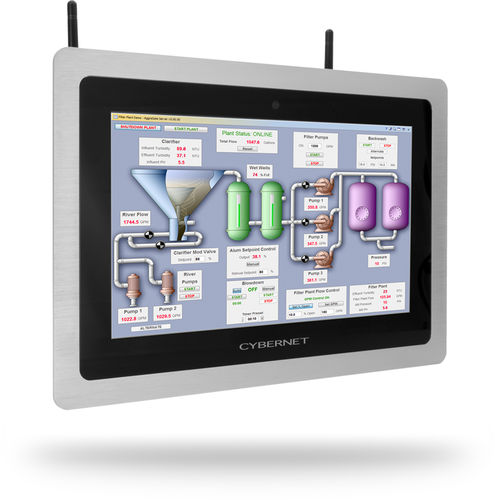
#Industry News
A Practical Approach to Supply Chain Risk Management
Stopping Problems Before They Happen
2020 has passed, and frankly, the entire year was essentially one massive supply chain disruption. Fortunately, these trials and tribulations made manufacturers realize the importance of creating supply chain risk management plans to be better prepared for future interruptions.
According to The Hackett Group’s research, 19% of supply chains did not effectively deal with risk. In comparison, 38% performed unevenly — sometimes recovering from disruptions and other times not.
What can be done to avoid these pitfalls? What does supply chain risk management look like in 2021, and how can hardware like industrial grade PCs help?
What Supply Chain Risks Do We Need to Look For?
Even though supply chain risks have existed as long as supply chains themselves, manufacturers still struggle with them. A practical approach to supply chain risk management in the modern-day must start with identifying new supply chain risks that came up in the tumult of the past year.
Future Pandemics
As the past year has made painfully clear, pandemics exist. And with the recent news that the coronavirus could become seasonal, virus flare-ups will likely become a typical supply chain risk. Disruptions like shutdowns, remote work shifts, and impacted foreign supply chain partnerships are no longer crazy occurrences. They will need to be accounted for when creating a supply chain risk management plan.
Regulatory Compliance
Regulatory compliance has always been a variable to keep in mind with supply chain risk management; however, regulations are likely to increase in a post-pandemic world. Whether these regulations are within your region or affect partnerships abroad, sudden changes to regulations stand to be a significant risk to your business’ status quo. Planning for them will be essential to creating a practical approach to supply chain risk management.
Fluctuating Demand
With a change in consumer behavior thanks to stay-at-home regulations, remote work, and more come a shift in demand for different goods and products. Demand is set to fluctuate rapidly as new waves of the virus, vaccine efficacy, and societal regulations all ebb and flow. Keeping an eye on these fluctuations and learning to predict them will be essential.
Creating a Supply Chain Risk Management Plan
When you know what problems to expect, you can create a plan to address them. Things to keep in mind when crafting your risk management plan include:
- The financial impact you can expect to incur if you experience a supply chain disruption.
- Backup suppliers of specific materials or goods that can be reached out to in case of an emergency.
- Regular fine-tuning of your risk management plan as new risks are introduced.
- How to Train employees on the latest risk management plan and adherence.
What to Include in Your Supply Chain Risk Management Plan
Training Documentation
A supply chain risk management plan is exactly that, a plan. While it should be flexible, it’s something that should be laid out and followed. Having a training program in place for your supply chain risk management plans ensures resiliency.
Training documentation can be shared seamlessly through workstations with industrial grade tablets. These documents can even be pre-loaded onto these tablets, streamlining new hires’ training process and even improving the reskilling process for veteran employees who need to be trained on new policies.
Data Capturing Systems
Sensors and data capture are essential for gathering information needed to assess different variables like the financial impact of supply chain risks. Not only that, but sensors can also be used to predict breakdowns in production machinery, another common threat to your supply chain. Inventory and available assets can be closely tracked with smart hardware such as RFID and barcode scanning devices.
IoT sensors and Edge Computing apparatuses can ensure data is gathered in real-time and even eliminates the risk of off-site data silos going under and limiting your access to crucial data.
In addition to these apparatuses, having workstations that can gather and consolidate the data drawn in from these sensors is also essential. If you plan on using industrial mini PCs or rack-mounted computers, finding a manufacturer who can equip these solutions with RFID or barcode readers can make scanning in inventory much simpler. Manufacturers who can do this and build out custom rigs that promote functionality with legacy hardware/software can also make adopting these new stations much easier for staff. And the easier it is to adhere to your unique supply chain risk management plans, the more likely your business will stick to it.
Communication Systems
So you have a plan, all the data you need, and all of the supply chain partnerships you know you can trust to fulfill your essential activities. But none of that matters if you’re unable to communicate with the people who need to be notified in the case of a breakdown. Fortunately, tons of solutions exist to communicate with disparate teams both safe from a cybersecurity standpoint and more efficient. Manufacturing communication systems, for example, that are built out to include a shared employee dashboard make sharing critical information simply. With blockchain ledgers, these communications can be adequately protected and updated in real-time, especially if used in conjunction with the workstation solutions we mentioned above.
Prepare For What You’ve Observed
Supply chain risks are still a regular occurrence, but the types we’ve seen occur more frequently in response to a pandemic have changed. Creating a plan for supply chain risks has never been a groundbreaking recommendation, but you can never go wrong with updating your plans to meet current pain points. For more information on how you can start creating a program best fit for your business, contact an expert from Cybernet.





